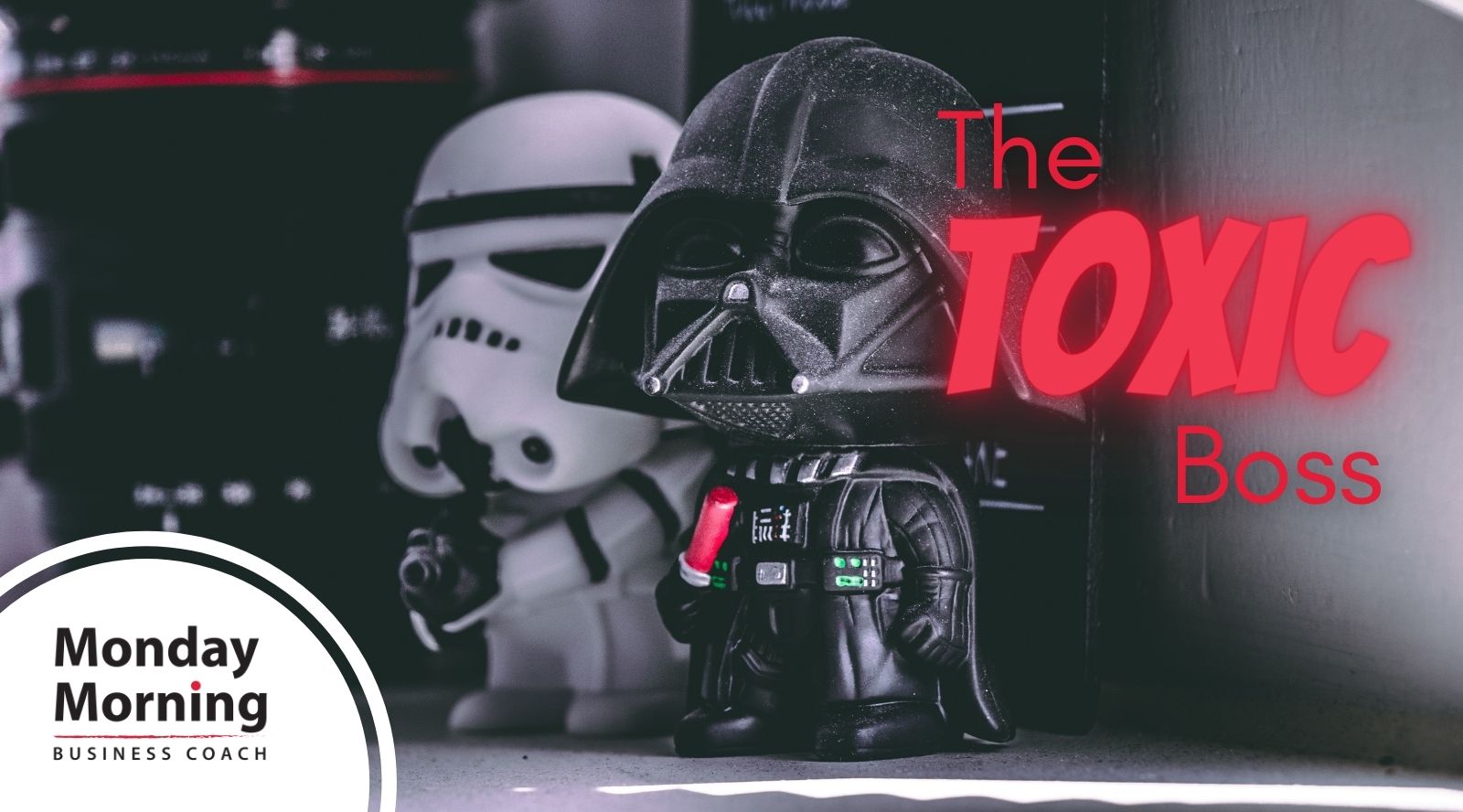Thank you for all of your thoughts, examples, and questions as we explore the concept of Psychological Safety.
This is an important topic given the research out there, and yet creating it is not a simple one-and-done decision or exercise. In addition to hearing from leaders who are grappling with how to create more psychologically safe environments, we’ve also been hearing from those of you who are struggling with leaders who are toxic. Those leaders who are controlling, diminishing, and demeaning.
So today, we’re going to talk about an example from a client – we’ll call him ‘Mike’ and his boss ‘Andy’.
Andy is the CEO and direct manager of Mike and the rest of the executive team.
Andy’s leadership included playing favorites, purposely getting the executives to argue, not listening to his employees’ input, and blaming them when things went off the rails. He frequently said that arguing created a better team and supported his team to direct personal insults toward one another.
This created an environment where the executive team didn’t feel safe to bring their ideas or thoughts to the table because they felt that there was no point. In addition, no one on the team felt like their skills, experience, or contributions were respected because everything always ended up being “Andy’s way”.
Mike had made some efforts to create a better environment. He believed they would all be more successful if he and his teammates felt safe to share ideas, knew that they’d be listened to and their thoughts valued, and if they had influence over and impact in their day-to-day work. When nothing he did succeeded, he reached out to us.
REFLECT
We started by helping Mike assess if there was any way to influence Andy directly. We recommended that Mike think about his own triggers (any behaviors of Andy’s that put Mike in a reactive mode rather than being able to respond thoughtfully) and any triggers that Andy may have that Mike could work with or around.
COMMUNICATE:
After considerable discussion and exploration of what Mike thought made sense, he went to Andy to talk about a project that Andy was very invested in and that needed some refinement to be successful. He asked if Andy was open to some thoughts about how to make the project more successful. Note: This, of course, was a risk, so if you’re in this situation, take the risk seriously. We don’t want you to put your job in jeopardy.
Mike offered Andy suggestions for how to get the team more engaged and productive. But, after several thoughtful and strategic efforts; from frank discussions to bringing exciting solutions to Andy, Mike and the team were unable to change the dynamic that Andy had established.
When individuals or teams hit this point, they often start looking for another job. In this case, Mike was very committed to the organization and truly believed that Andy’s leadership was creating considerable financial and HR risk.
ELEVATE:
So, we worked with Mike to help him document the incidents objectively and identify the 3-5 patterns that were creating the greatest negative impact on the organization. Then he met with the owners of the business and, respectfully, shared his concerns and asked for guidance on how to proceed.
In this case, the owners were able to see and understand the experience of the executive team, and Andy was let go. The team worked to heal and grow in new ways to create a foundation of trust and safety.
Of course, the outcome isn’t always great…sometimes things get worse. But, the goal is to look for opportunities to create something better, together. And when that’s not possible, the next right step may be to work on your exit strategy.
If you’re working for a toxic boss, think about whether it’s possible to change the dynamics of the relationship or if it makes sense to look for another position inside the organization or in a different organization.
Let us know how it goes.
How can we support you?
If you’d like support in working with (or leaving) your toxic work situation, contact us today.


